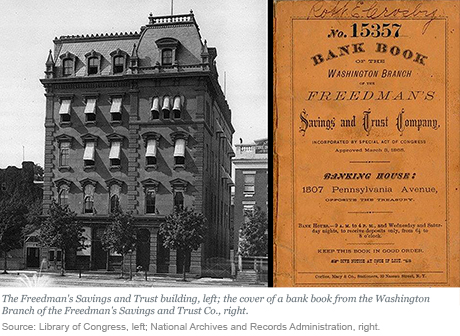Historical Echoes: The Legacy of Freedman’s Savings and Trust

Freedman’s Savings and Trust Company, often referred to as the Freedman’s Bank, was created specifically for former slaves and African-American soldiers. It was established by legislation signed by Abraham Lincoln on March 3, 1865, only weeks before his assassination. Groundwork for the bank was laid during a meeting in January of that year by abolitionist preacher John Alvord, who met with a number of others to discuss the possibility of founding a system to assist freed African-Americans in their savings, financial development, and integration into American economic society. In the ten years of its existence, the Freedman’s Bank brought hope and then heartbreak to the African-American community.
Beyond 30: Long‑Term Treasury Bond Issuance from 1957 to 1965

As noted in our previous post, thirty years has marked the outer boundary of Treasury bond maturities since “regular and predictable” issuance of coupon-bearing Treasury debt became the norm in the 1970s. However, the Treasury issued bonds with maturities of greater than thirty years on seven occasions in the 1950s and 1960s, in an effort to lengthen the maturity structure of the debt. While our earlier post described the efforts of Treasury debt managers to lengthen debt maturities between 1953 and 1957, this post examines the period from 1957 to 1965.
Beyond 30: Long‑Term Treasury Bond Issuance from 1953 to 1957

Ever since “regular and predictable” issuance of coupon-bearing Treasury debt became the norm in the 1970s, thirty years has marked the outer boundary of Treasury bond maturities. However, longer-term bonds were not unknown in earlier years. Seven such bonds, including one 40-year bond, were issued between 1955 and 1963. The common thread that binds the seven bonds together was the interest of Treasury debt managers in lengthening the maturity structure of the debt. This post describes the efforts to lengthen debt maturities between 1953 and 1957. A subsequent post will examine the period from 1957 to 1965.










 RSS Feed
RSS Feed Follow Liberty Street Economics
Follow Liberty Street Economics